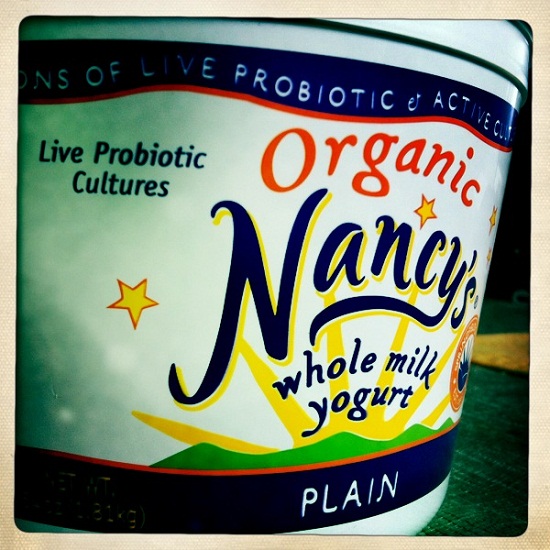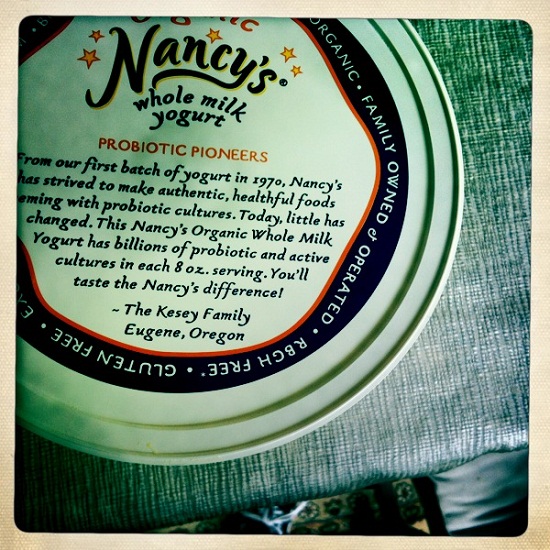I had a question last week from a reader of my probiotic/prebiotic/gut health column about Nancy’s Yogurt. I had mentioned in the column that people should look for the “Live and Active Cultures” seal on their yogurt to make sure that the probiotic bacteria in the yogurt have not been killed by heat processing (if they aren’t alive when you eat them, they have no chance of improving your intestinal bacteria population).
I was especially interested in finding out an answer to this question because Nancy’s Yogurt and I go way back. Nancy’s Yogurt comes from the Springfield Creamery in Springfield, Oregon, which is right smack next door to the lovely city of Eugene, where I spent my formative years (read: high school and my undergrad years of college). Go Ducks! Yes, I enjoyed my Nancy’s Yogurt while wearing Birkenstocks and wearing patchouli. OK, that’s a partial lie…I never wore patchouli.
Nevertheless, Springfield Creamery has a fine, long history of family ownership by the Kesey family (yes, they are related to the famous author Ken Kesey, who was also a Duck). I trust this yogurt. I trust that it contains millions of live and active cultures in each spoonful even though it doesn’t carry the official seal from the National Yogurt Association. As I found out from visiting the NYA’s About Yogurt site:
The seal is a voluntary identification available to all manufacturers of refrigerated yogurt whose products contain at least 100 million cultures per gram at the time of manufacture, and whose frozen yogurt contains at least 10 million cultures per gram at the time of manufacture. Since the seal program is voluntary, some yogurt products may have some live cultures but not carry the seal. It is, however, the industry validation of the presence and activity of significant levels of live cultures.
So there you go. I’m glad for the seal, because sometimes when I’m traveling and trying not to rely solely on restaurants, I end up buying brands of yogurt I don’t usually buy. When dealing with the unfamiliar, programs like the NYA’s, voluntary or otherwise, makes it easier to make good choices. But if you know your brand (and I do like having a good idea of who’s making my food), and trust that brand, such seals may not be necessary.
Nancy’s is one of the few yogurts I buy. I do also love me some Stonyfield (I feel good about how their company does business, as well), and I have a devotion to the big tubs of Fage nonfat plain Greek yogurt I can get from Costco. [12/14/15 update: Add Siggi’s Icelandic Skyr to this list!] But anyone who doubts my longstanding devotion to Nancy’s just has to visit my basement. I have a massive stash of Nancyware I can’t bring myself to recycle or otherwise part with. If you are a Nancy’s fan, too, you know exactly what I mean!
P.S. My reader also asked about the fact that Nancy’s is pasteurized. Pasteurization does involve heat treatment, and yes heat is not kind to probiotic bacteria! However, it’s the milk that is pasteurized, and this is done before the live and active cultures are added so they can turn the milk into yogurt. So those tiny little health promoters are just fine…as long as the yogurt itself doesn’t undergo further heating. Great questions!









